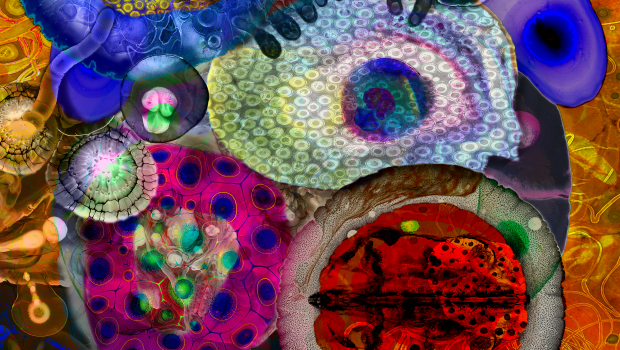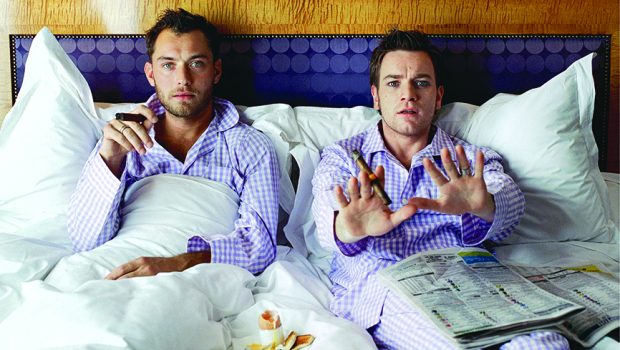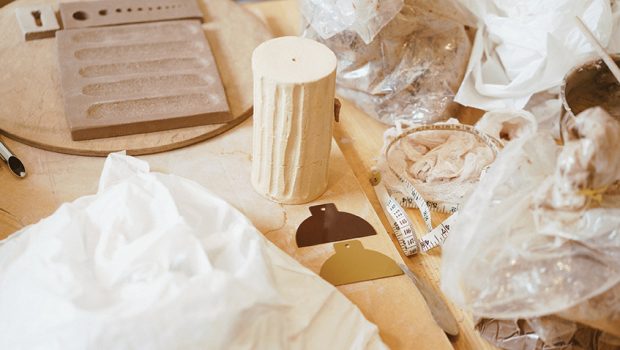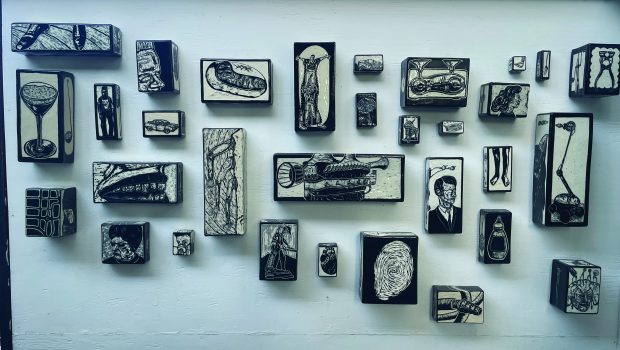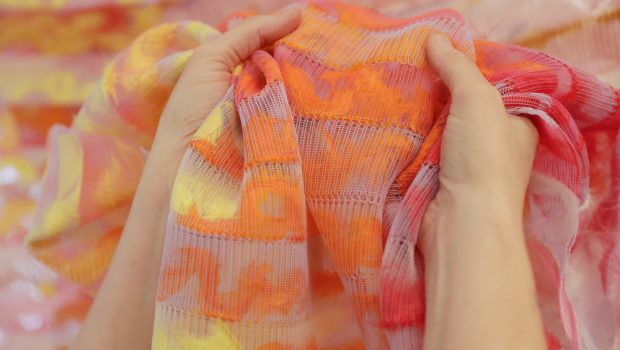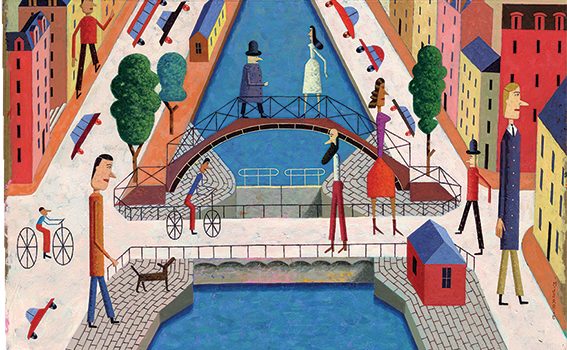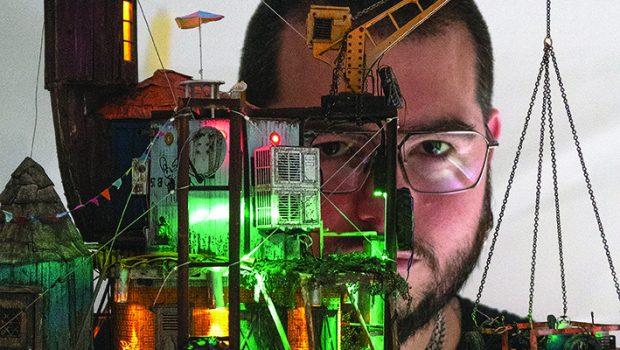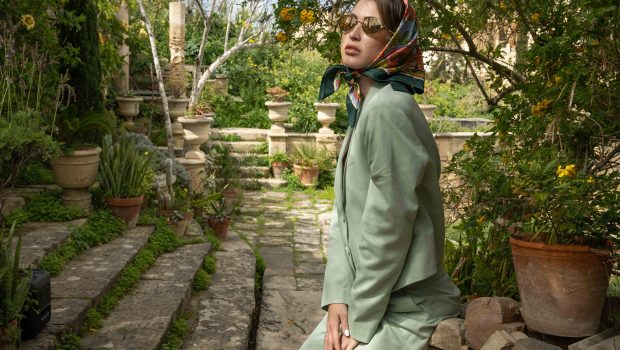Capturing The Amazon
British artist John Dyer is more than an artist, in the UK he’s a household name and popular contemporary art subject for school children. John is renowned for his prowess at capturing the world’s most remote environments and their inhabitants in a truly colourful ensemble, and what’s more returning back to the UK and spreading the word for generations to come. We are over the moon to feature him in this Earth Vamp issue, we couldn’t think of anyone more fitting. Dayna Camilleri Clarke caught up with John, to discuss his creative journey.

Have you always been interested in conservation?
I grew up in the wilds of North Cornwall in the UK and spent my childhood roaming the huge wild beaches, sand dunes, rugged moorland and sheltered valleys armed with my camera, field guides, binoculars and a sketching book and paints. I was enchanted by everything I saw, sand blowing across the beach, shells and sea creatures, fantastic fungi in the woods, frogs and newts, the vast array of seabirds, the sounds of the dawn chorus, the waves crashing onto the shore and the constant chorus of crickets in the night. This gave me a love of the natural world, and my creative process allowed me to understand it, capture it and celebrate it. These early adventures created the foundation and direction for my future life


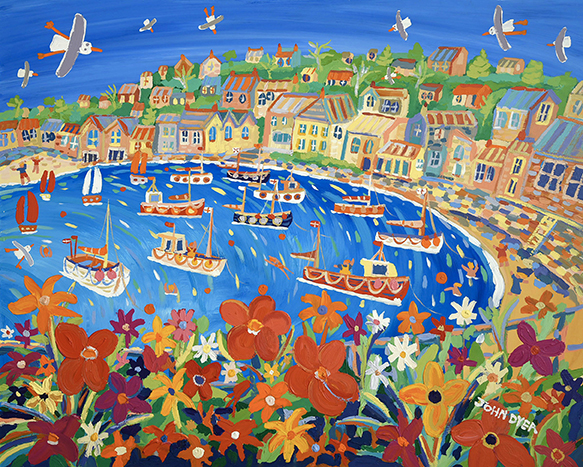
How did you become interested in portraying rainforests?
For my art degree, I trained in London in design, photography and painting – a wondrous mix of art and design that led me, in 1989, to be awarded a travelling bursary from Thames TV. This financial and corporate backing for my art allowed me to create a whole new adventure, and what could be more significant than going to the Amazon rainforest in Brazil to explore the remaining nature beauty, which I did with my camera and infrared black and white film. It was an extraordinary experience for me, that gave me a lifelong love, appreciation and connection to the rainforest. It also changed me creatively; I abandoned photography as it had been unable to capture the true spirit of the rainforest, and I moved to paint as that could capture not only what I saw but also what I felt. That is when art happens, and that is why art is so important. In 1989 I was also made a fellow of the Royal Geographical Society by the vice president Robin Hanbury-Tenison OBE, and Robin’s advice, mentoring and friendship over the years has fuelled my connections with the rainforest as he is the 20th century world’s greatest explorer and has connections all over the world.
How did this lead to the phenomenal collaboration at the Eden Project?
The extraordinary plant forms I saw in the rainforest ignited a renewed passion for Cornwall. Cornwall is blessed with a temperate climate caused by the Gulf stream. Sub-tropical plants grow wildly all around the coast with succulents, palms, bizarre flowers that tower like triffids over 15 feet high and even agave cactus plants from Chile. The ‘Lost Gardens of Heligan’ were reawakened by Tim Smit (co-founder of Eden Project). I remember meeting Tim in the garden at Heligan when only a handful of visitors were allowed to venture inside. The garden has an astonishing ‘jungle garden’ full of tree ferns and palms, and I decided to relocate from Camden in London, where I was painting and freelancing as a designer, and I moved back to Cornwall to paint. All of those plants and the gardens provided my ‘rainforest’ but what happened a few years later was truly was remarkable – the Eden Project was built. The Eden Project is the world’s largest captive rainforest.
I approached the Eden Project team about painting the plants, and they already knew my art well as I was one of only 50 contemporary artists at the time selling their art worldwide through the world’s biggest publishers – the Art group. Those early days of having my posters in every outlet from Habitat to Castorama paved the way for me as a young artist. Sue Hill, the art director at the Eden Project at the time, loved my ethnobotanical works from Provence. I had spent a few summers and autumns painting the grape and olive harvests, and this type of human connection to plants was exactly what Eden was about. I left my first meeting with the Eden Project as the ‘Painter in Residence’ and over twenty years later I still work alongside them in this role when I wish. Eden had about 50 artists they worked with within the early days, but I was the only artist who asked to see the plants! Once a week I would drive up to the special plant nursery they had whilst the actual biomes where being constructed, and they would slide open the doors to my private rainforest with 20,000 plants! Apart from 4 or five gardeners, it was only myself in there, and it was heaven. That led to working in the biomes, and it was a total joy – finally an art studio that was real rainforest – butterflies, tree frogs and all!



You’ve held some pretty impressive artist in residence positions. Can you tell us a bit more about that?
I have been very lucky during my career, but I created the opportunities myself by following the breadcrumbs from my original adventure in the Amazon in 1989 to today. One residency seemed to naturally follow the next – not through invitation, but through reaching out to an organisation or individual with a proposal. Painting at Eden sparked an interest in gardens – so I asked Alan Titchmarsh if I could visit him and paint – he said yes! Then I thought what fun it would be to spend a week with rock star come gardener Kim Wilde, and she said yes too! That led to an exhibition at the Eden project of new paintings from Italy and a set of signed prints of Alan’s garden (signed by Alan and myself), and a live talk with Alan and myself to 500 people at the Eden project. It put me on the radar of the leading plant genetics group CGIAR, and I suddenly found myself in Costa Rica painting bananas!
One thing led to another and invitations to the Philippines to paint the rice harvest for the United Nations year of Rice and then to Peru to paint the potato harvest for the United Nations Year of the potato. Residence after residency kept coming. They have all been enormous fun. Everyone has had a focus on biodiversity and the environment, even the Australian residency for Banrock Station wine, where I painted the rejuvenated wetlands and wildlife and got served chilled rose wine whilst painting in the outback!
What have been some of your greatest career highlights to date?
One of my favourite residencies has been back at the Eden Project in 2015. I put together a project with Robin Hanbury-Tenison and Survival International for me to spend ten days with an Amazon Indian, Nixiwaka Yawanawá, in the rainforest biome. It was extraordinary. Nixiwaka had never painted before, and I had never heard of or experienced the Yawanawá’ tribe’s spirituality and deep connection to the rainforest. We taught each other and created a new genre of art – Amazon art. I believed this is a world first, and the paintings that Nixiwaka and myself did are a unique and first insight into the tribal culture and understanding of the rainforest.
And the biggest challenges?
Painting in rainforest condition in very remote parts of the world is deeply challenging. My first two ‘Last Chance to Paint’ expeditions (https://www.lastchancetopaint.com) in 2019 took me to the edge of what I am emotionally and physically capable of. I repeated the residency with Nixiwaka Yawanawá in June 2019. This time, we did it embedded with his tribe in a very remote corner of the Brazilian Amazon rainforest near Peru. Just the final part of the journey to get there is an 8-hour motorised canoe ride along treacherous rivers filled with fallen trees and wildlife. It’s not for the fainthearted. Working within the complex dynamics and structure of the tribe, with the chief and shaman, was complicated and shone even more light on the fantastic relationship these people have with the rainforest.
In September of the same year, I spent some time in Borneo, deep in the rainforest with wild orangutans. It was the most wonderful experience, but there were so much smoke and ash falling from the sky as the rainforest burnt all around me that it was hard to breathe, and the sun was obliterated. It was physically and emotionally hard, but it has re-energised me to try to do my bit to stop the devastation by educating children using art to engage them in the issues. I was literally on the front line of climate change, and it is shocking—a real war zone.


You are an earth day artist. Why is this important to you?
Being an artist for the earth with earthday.org is a privilege, and I was delighted when the organisation asked me to be one of their artists in this role. It’s important for me as every organisation I work alongside helps me gain a larger audience and engage people optimistically and positively in making changes in their lives to protect the planet. Art is an amazing way to do this and the reach of an organisation like Earth Day is huge.
You work a lot on educating the youth of today. Why is this essential?
My paintings are studied in schools around the world, but in the UK, I am often the subject of school work from the primary level all the way up to a degree thesis! I get requests from schools studying my paintings of Cornwall, but for me, if they can fulfil the contemporary artist part of the curriculum with my environmental paintings, that achieves far more.
If we can capture young minds early and give them personal reasons to protect the environment, they might take steps to do that. It comes down to one word – love. If we can’t instil a love for the environment, how can we expect children to be careful with it? We have to move beyond the science of the rainforest and talk about it on a personal level.
I aim to give children that personal connection, a love for the environment by getting them to invest their own time in making a painting and learning what and who the painting is about. Once you have met the Yawanawá tribe with me and seen the baby orangutans and painted them, I believe it will create that love, and then we can start real change at a powerful individual level. We really don’t have long to get this right now, and the next decade with set the future, but the future isn’t written yet – well, not entirely anyway, so there is hope. Let’s paint a brighter picture for us all.
Can you describe your creative process?
To start a painting, I have to experience the subject, see it, walk around in it, gaze at it, think about it and love it. Once I have formed that connection I embark on painting by committing paint directly from the tubes of colours onto my canvas. No drawing, no visual planning, just a general idea of what I feel and want to say. The painting is a three-way conversation, my voice, the subject and the painting itself. I paint with speed and total focus when working outside on location and don’t leave the place I am painting until the canvas is complete. It can be intense, and Nixiwaka found the experience exhausting working alongside me. He literally sank to his knees with tiredness, and this is a young man who can run a marathon and who’s natural habitat is the rainforest!
Do you find it hard to part with your work?
Each piece of work I complete is part of my journey through life. They are in many ways, autobiographical and often contain my family or me as a narrative in the paintings. I have kept a few key examples over the years, and my family has requested to keep a few. The vast majority of my paintings are purchased quickly by private buyers, and I see that as the buyer looking after the painting, the picture hasn’t really gone. It’s just out of sight for a bit, and hopefully radiating positive energy, my story and the story of the viewer for many decades or centuries to come. Each painting is a part of me, my life and my ongoing story and connection to the world, and they need to be on walls and filling people with joy.
What’s in store for 2021?
2021 should see me in Kenya in Africa painting with the Maasai tribe and capturing this amazing country’s wildlife on canvas. I will be working with the Born Free Foundation who is hosting the project and a working partner for Last Chance to Paint. I will paint the very last two Northern White rhinos on planet earth and use that story to let schools know how little time there is and how the entire chain of biodiversity is crumbling. However, it will be a celebration of people, plants, and animals, not a miserable telling of disaster, but a look into a better future if we all play our part.
I am also aware of the increasing mental health issues caused by the pandemic, and I am very busy raising money with an art auction for Cornwall Mind – the mental health charity. I have gained a lot of support from this, with many celebrities creating artworks for the auction. It’s all a lot of fun but with a very serious cause at the heart of it. Some of the people involved can be seen here: https://johndyergallery.com/pages/mind-cornwall-art-auction
Last Chance to Paint is also being prepared for the possibility I can’t travel in 2021, so we have a full site redesign ready to go live in a week or so and Born Free and myself will be doing a series of webinars for our 280 schools across 29 countries – quite a following!
Beyond that painting the amazing summer in the arctic beckons and killer whales off the coast of Canada – there is so much to do and celebrate in our wonderful world.


